Prevent tree topping - hire only licensed arborists to trim your trees
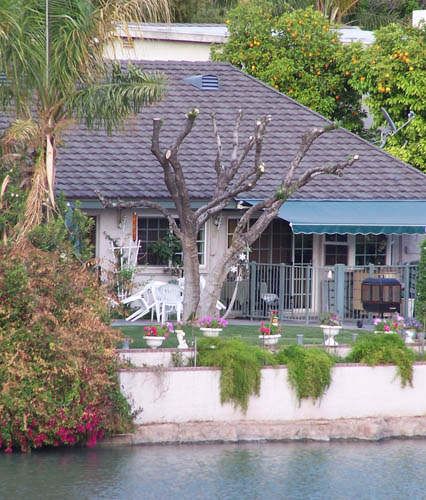
Topping is a major threat to healthy trees. When someone cuts off the tree's leafy crown, it causes permanent, irreparable damage. Large stubs left from topping seldom close or heal properly, making them vulnerable to insects and disease. Removing too much of the crown cuts off the tree's food-making ability. A twenty year old tree has developed the proper amount of leaves to feed twenty years worth of branches, trunks and roots. Thus, topped trees begin to starve and often suffer shortened life span. Removing the tree's natural canopy also exposes the tree's bark to direct sunlight, which can lead to scalding and deterioration. After topping, the tree develops "suckers," dense, upright branches that come out just below the pruning cut. Often people top trees to increase their view, but the suckers usually grow back to the original height of the tree. Thus, topping offers only a temporary solution to oversized trees. Some species don't produce suckers, so lacking foliage, the tree quickly dies.
Topping disfigures trees. The unsightly branch stubs and broom-like suckers replace the tree's natural beauty and form.
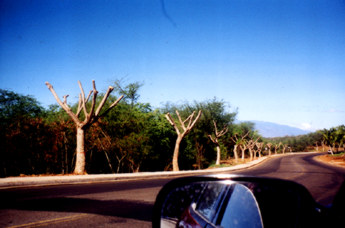
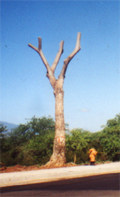
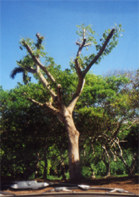
This horribly disfigured tree (left) will eventually grow suckers (right), but will never return to its full form and beauty.
Instructions for Selective Pruning
If you must reduce the height or density of a tree's crown, do so with judicious thinning. Pruning a tree properly when it's young will eliminate the need for major pruning later on. This involves thinning out the tree's crown by removing selected branches. Only a small portion of the tree's canopy is removed. Pruning cuts are made close to the trunk, leaving only the collar of the removed branch. Selective pruning requires greater skill and time than topping, and may cost more, but is worth it. Topping lowers a tree's value by at least twenty percent; frequently fifty percent or more. Sometimes one hundred percent of the tree's value is lost (see photos above). Proper pruning will make a tree more beautiful and more valuable over the years. Therefore, hire a professional arborist if you are considering trimming your trees.
Editor's Note: Most trees do not need to be thinned. If the tree ain't broke, don't fix it!!
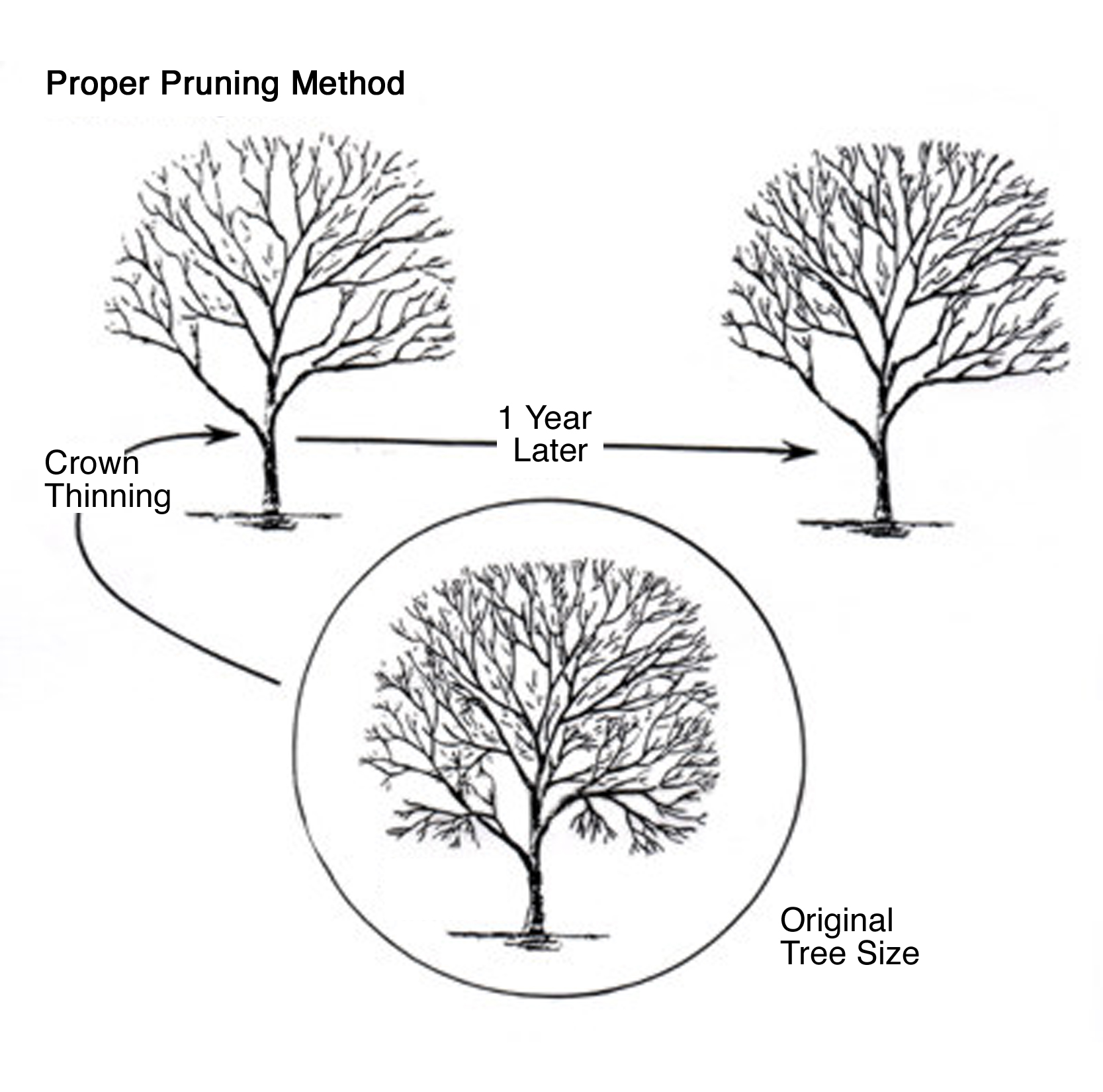
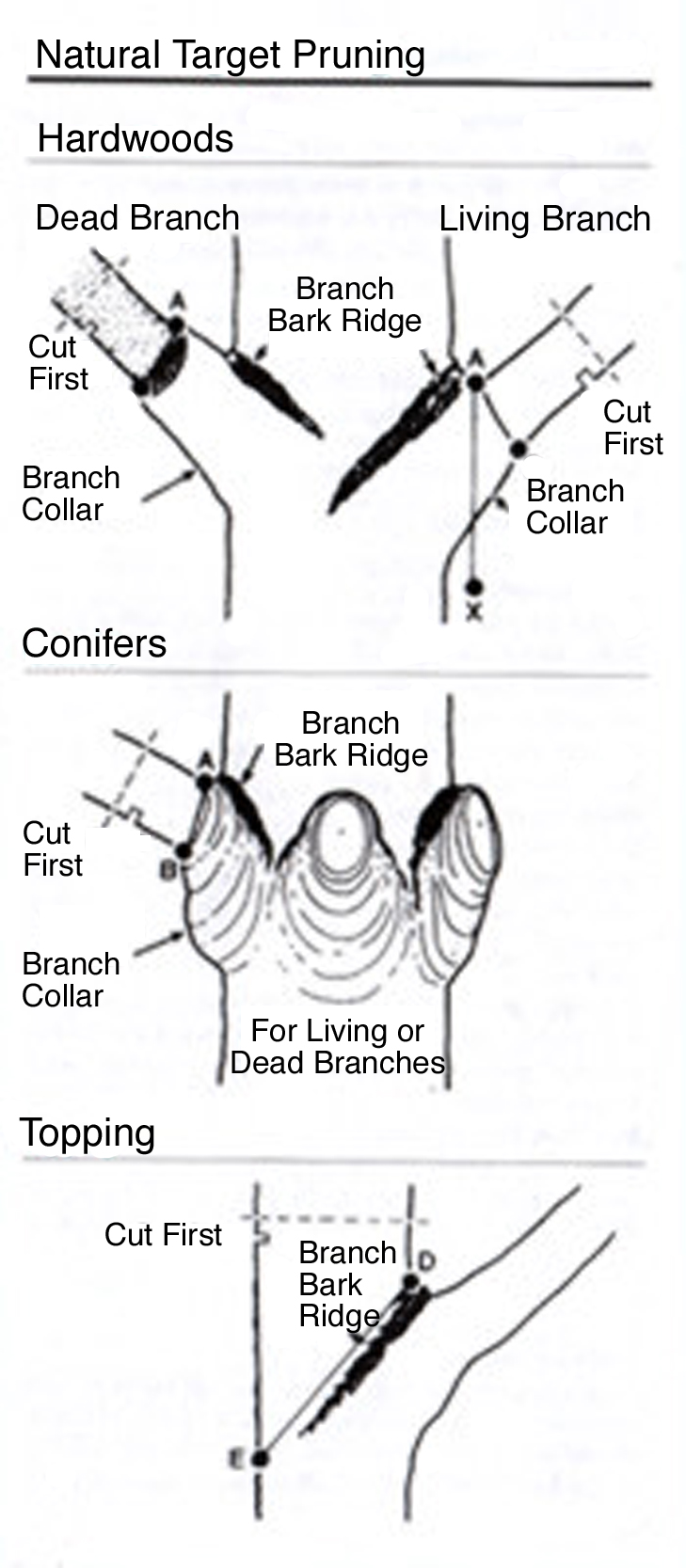
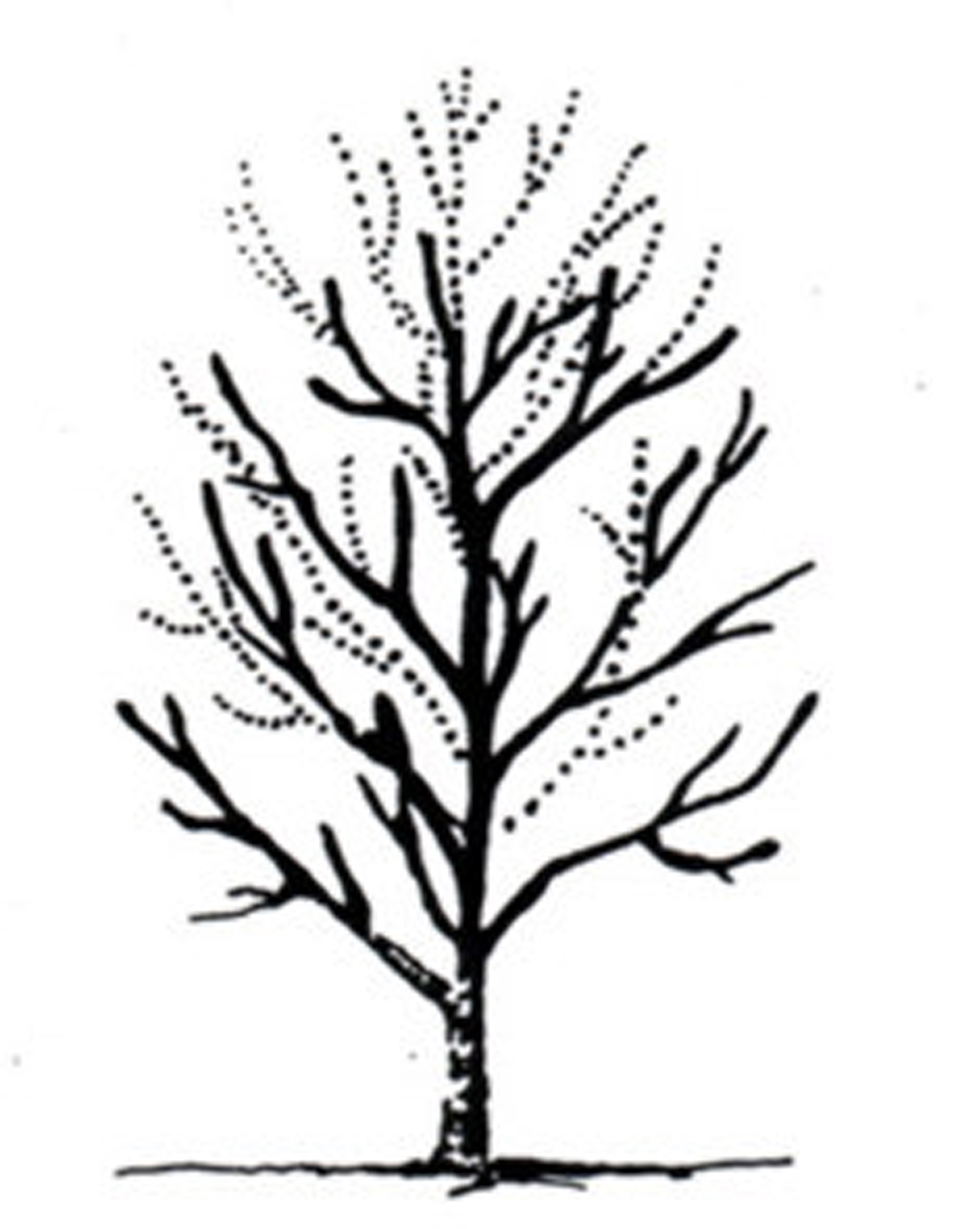
These diagrams show the correct method for selective pruning.
Let's substitute quality pruning for destructive topping! Everyone profits from correct pruning. We owe it to our trees to take better care of them. Trees offer benefits to us and to the entire planet. Every tree we care for will help reduce global climate change. Do what you can to help: preserve and protect an existing tree.
Steamboats.com wishes to thank Agape Horticultural Services, a Division of Bartlett Tree Service, of Mesa, Arizona, for supplying information and diagrams for this story. We also wish to thank Murfreesboro City Beautification Commission of Murfreesboro, Tennessee; Cass Turnbull; U.S. Cooperative Extension of Riverside, California; C.A. Kaiser, M.L. Witt, J.R. Hartman, R.E. McNiel and W.C. Dunwell; the University of Kentucky College of Agriculture Cooperative Extension Service; the Public Awareness Program of the International Society of Arboriculture, Western Chapter; and the U.S. Department of Agriculture Forest Service of Broomall, Pennsylvania, who also contributed to the story. Photos of topped trees in Makena Beach, Hawaii, by Nori Muster.
Links
see a tree topping incident in progress
another before and after case
links to more anti-tree topping sites